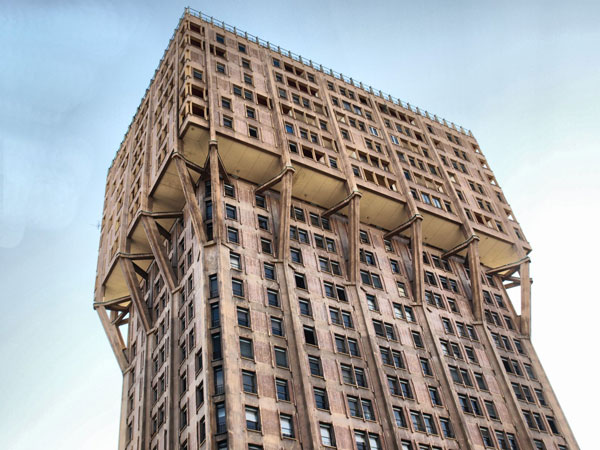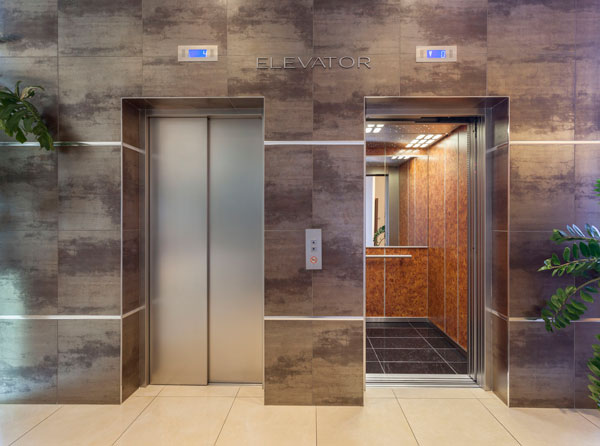
Buildings don’t fall apart overnight. Deterioration is a slow process that takes its toll over time, which is good news for facilities managers. It means you have time to assess and plan for upgrades before they become costly repairs that interrupt operations.
As buildings age, they face normal wear-and-tear issues. But when should facilities managers expect the larger repair and maintenance issues to start? David Albrice and the team at RDH conducted a study that concluded there are five stages in the life cycle of a building that correlate to asset renewal:
- “Prenatal” (under year 1)
- “Childhood” (1–16 years)
- “Adolescence” (17–29 years)
- “Adulthood” (30–49 years)
- “Old Age” (50-plus years)
According to the study, “Adolescence” is when buildings see the largest and most expensive asset renewal projects. It is during this period that significant funds are reinvested in the building.
Knowing this, facilities managers need to prepare for upgrades as their buildings approach the 30-year mark.
10 Upgrades to Consider As Buildings Age
The most cost-efficient way to maintain any building is to proactively plan for repairs and upgrades. In older buildings, there are assets and elements of the structures that facilities managers should consider when making maintenance plans.
Aging Control Systems
Building controls will develop problems as they age. The difficult part is figuring out the reasons for those failures and how to fix them. Jim Sinopoli, managing principal for Smart Buildings, tells Facilitiesnet that common problems in older control systems include getting repair parts, servicing the systems and integrating the older control systems into newer systems.
At the very least, control systems need to stay up-to-date with software releases and patches. If the hardware is aging, too, it might be time to upgrade to a system that offers smart control over the building’s various functions.
Roofing
The lifespan of a roof varies greatly depending on the type of roof, climate and maintenance history.
The National Roofing Contractors Association and industry professionals recommend performing a roof inspection twice a year, once when the weather is at its hottest and once when at its coldest, writes Edis Oliver. The most common issues to look for during inspections are:
- Abandoned equipment, which should always be removed from rooftops to prevent it from causing any damage.
- New equipment that has not been properly installed.
- Storm damage from high wind or hail.
- Neglected maintenance.
- Obstructed drainage system.
- Vandalism, such as broken skylights, punctures and damage to mechanical equipment.
- Unrelated trade work that was done without consideration for protecting the roof.
- Unauthorized leak repairs that were improperly done.
- Deteriorated flashings.
- Contiguous building wall issues.
Elevator Systems
According to ElevatorSource, it’s time to start looking at elevator upgrades at around the 20-year mark. After 25 years, most elevators’ service lives are complete. That’s for well-maintained elevators, by the way. If you have inherited older elevators that have been somewhat neglected, think about updating quickly.

Plumbing
Lead in the pipes is one of the biggest problems with older plumbing fixtures, according to Nick Gromicko, founder of the International Association of Certified Home Inspectors. Lead in the pipes can be found in older buildings constructed before to 1978 and may contaminate a facilities’ drinking water, presenting a significant health hazard.
Another issue with older plumbing is simply the cost of using inefficient plumbing fixtures and equipment. According to David Lubach, 50 percent of water use in commercial facilities can be attributed to plumbing fixtures and equipment. The fixes are simple here: Modern fixtures such as faucets and flush valves can reduce water consumption significantly.
Lighting
If your lighting system also falls within that “Adolescent” age range, it’s almost definitely time to consider an upgrade. The technology available today is simply so much more efficient than it was 20-plus years ago.
As the team at Net Zero USA points out, LED systems can save you significant money each month over metallic halide systems. Further, lighting systems are one of the easier upgrades you can make. There isn’t painful downtime as there might be with, for example, and elevator modernization project. Prioritize this one.
Fire Alarms
An older fire alarm might not just be a safety concern; it could be a code violation.
As the team at LifeSafety Management points out, some local governments have begun to legislate that commercial buildings must have addressable fire alarm panels. These panels allow the FM to see exactly which sensor detects smoke or heat so that response can be quicker to any potential fires.
HVAC Air Handlers, Chillers and Boilers
Daniel Baker at Horizon Engineering Associates suggests that facilities managers should ask themselves two questions when assessing the need to repair or replace HVAC systems:
- How much does the current system cost to run and maintain?
- How much energy does the current system use?
Then determine how much energy a newer model would use and compare. Lubach lists some considerations when assessing the condition of a chiller unit:
- Age and reliability of the unit.
- Repair and maintenance costs.
- Difficulty with locating spare parts.
- Filling refrigerant. As of January 1, 2015, the Environmental Protection Agency phased out R22, a popular refrigerant option, especially in older units.
And with any aspect of an HVAC system, cost and energy efficiency will dictate the timing for repairs or replacement of units. Older units are going to be less efficient, which correlates to higher costs.
Windows
Faulty windows are an issue for older buildings and have a detrimental effect on energy efficiency, comfort and aesthetics, as Craig A. Hargrove notes. He lists the following issues to look for when assessing windows:
- Deteriorated gaskets which can cause leaks.
- Aging frames that have developed cracks at welds and stress points, which let air and water through.
- Poor seals between the window frame and the operable part of the window.
- Condensation/fogged glass caused by a breach in the seal of insulating glazing units.
Building Facade
A building’s facade can actually help improve its energy efficiency. Though facade improvement sounds like a superficial improvement at face value, there is a business case to be made for such a project, as well.
The team at IMARK Architectural Metals argues that facade renovations have become more common in recent years, too, because of the cost efficiencies they offer. “Typically, ground up new construction can take anywhere from one to two-plus years depending on how easy it is to source the right location, hire the right architects and construct the building,” they write. “With façade renovations, projects can take as little as two months with minimal disturbances to existing building occupants depending on the scale and scope of the renovation.”
Restroom Renovations
According to Thomas Westerkamp, restroom renovations are one of the most common upgrades made in commercial buildings. The upgrades are designed to bring these areas into compliance with access guidelines and introduce more efficient water-use technology. The benefits of restroom upgrades, as he notes, are “improved sanitation, greater comfort, easier access for all, and lower operating costs.”

Getting Approval for Upgrades
Strategizing building and equipment upgrades requires facilities managers to work with decision-makers to decide the best route to take to upgrade equipment and infrastructure. This means more than just turning in a work request with a budget. You may have to convince the decision-makers that the upgrades are necessary.
One way to do this is to translate the technical aspects of your plan into strategic ideas and numbers for decision-makers, says Jon Martens, facility operations division manager for the County of Sonoma in California. Show upper management the savings in numbers so they can easily digest the information.
Commercial building upgrades also reduce operating costs, resulting in more cash flow, notes Noesis Finance co-founder Scott Harmon. These are numbers that management will understand and want to see.
Facilities Managers Are the First Line of Defense
Facilities managers know their buildings and assets better than anyone else within the organization. The best FMs will act before equipment malfunctions or buildings deteriorate. Building owners rely on you to make sure their buildings remain operational at all times.
Whether because of codes, regulations or breakdown, buildings—especially those approaching the 30-year mark—will need to be updated to some degree. It is up to the facilities manager to assess structures and assets on a regular basis to address and plan for needed upgrades.
Credits:
claudiodivizia/©123RF Stock Photorilueda/©123RF Stock Photo
claudiodivizia/©123RF Stock Photo
